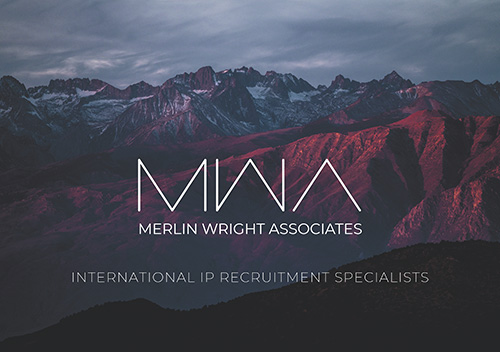Is There a Perfect CV?
Your CV is the first detailed information a recruiter or potential employer will receive about you – it will be their first impression of you so you need to ensure it highlights your most relevant skills and experience. Even if you have many years of experience, or you are passively interested in a role, putting some time and effort into the CV is critical in establishing your credentials.
If receiving a large number of applications, some companies may use ATS software which runs keyword searches to separate the wheat from the chaff. 75% of these are never read by a person and many qualified applicants may be dismissed as their language or formatting does not match the software’s keywords. Whilst an IP vacancy will not attract the same volume of CV applications as a sales-based role, it is still important to model the CV to fit the open position. ATS systems are also unable to cope with elaborate visual elements, certain typefaces or PDF’s so always keep it simple.
- Fonts & Formatting
Stick to traditionally-formatted CV’s.
We would recommend using a single-spaced, 12-point font which is simple and easy to read and present your CV on a word document. Times New Roman is recognized as a professional looking font.
Use round bullet points and do not include a picture of yourself, even though in some European countries, this is regarded as the norm.
Keep typographical emphasis to a minimum, only using bold or italics for the companies you have worked for and your job title.
- The Title
This should appear at the top of every page and should include your name, address, and contact information. The first page should be more detailed with a less detailed version following on later pages. Avoid listing multiple phone numbers and email addresses and make sure your email is recognizable as yours.
You may also wish to include links to LinkedIn, Twitter or your website URL if this will be relevant and enhance your career profile.
- Personal Profile
At the top of your CV you should summarize your current career and relevant skills and experiences gained. This could either be a short sentence or paragraph providing an at a glance view of your current professional expertise emphasizing areas in which you have experience and which are relevant for this role. You may also wish to include an objective statement describing the challenges you are looking for in your next position.
- Professional Experience
Remember to keep this minimalistic, using few typographical emphases. Always begin sentences with verbs and list your previous positions in chronological order, newest to oldest.
Use the present tense for your current role and the past tense for all previous accomplishments. For each position, state your title and responsibilities including the number of employees you managed if relevant.
The information provided here should include:
- Company Description
- Responsibilities – a brief summary of the tasks you undertook whilst there.
- Accomplishments – Be specific about your successes and quantify where possible. This is often ignored when writing a CV but it helps to show career growth and development and highlights and Achiever Pattern.
- Length – your CV length will vary depending on your career history. It is understandable that someone working for many years will have a longer CV than a newly graduated student.
- Include all your previous roles – even if it seems irrelevant, if you do not it may lead the interviewer to assume you were not working at that stage. And an early experience may even have been shared by the person interviewing you giving you an affinity with each other.
If you held a position for a short period of time, list the time period in months and do not try to hide the facts. Give a reason for a short length of time in a role, it may have been unavoidable for you.
If you have had multiple positions in the same company, talk about the most recent one first. If the position held was decades ago just simply include the titles one after another and summarize your career there.
- Education
Again, keep it simple and format in the same way as you have done for your career. Begin with your most recent education and include more details about any relevant qualifications.
- Additional Information
The final section should include any awards, recognitions, board seats, professional memberships, certifications, volunteer activities and languages. You do not need to include hobbies unless you have used your hobbies to raise money for charity or competed competitively in them. You can also list any publications you may have had.
7. The Don’ts
- References – it is not relevant to include “References Available upon Request”, employers are aware they can obtain these.
- Personal Information – marital status, age, weight, height or health conditions.
- And finally, always tell the truth.
Further Information about yourself to include
With the growth of the virtual world potential employers will most likely look you up online. Ensure your CV and online presence are the same.
Google yourself to find out what others would find if they did the same. Immediately address any problems as you don’t them to crop up unexpectedly at an interview. And keep all social media platforms up to date – a dormant account does not look good.
Employers and recruiters use this platform and if requested by them to connect be sure to accept. Don’t cut and past your entire CV but include the relevant achievements which will highlight you as a strong candidate.
Here you can and should upload a profile picture. Leaving one out makes you seem cold and dis-interested and having one will enable people to recognize you at industry events.
Remember there is no-where to hide. Once tweeted, it is there to stay. Do not tweet when you are angry or wound up.
Conclusion
We review many CVs each month and they come in so many different styles and pages. Whilst many recruiters will parlay your content into their own house style, we believe this is not a good approach because it does not reveal the personal writing style of the candidate. Therefore, always carefully craft your career document so that it properly reflects who you are and what you can bring to a position.
We hope these steps will assist you in writing your CV and we can happily give you some further guidance.
References:
DePaul, K. Harvard Business Review September 7, 2020; How to Get Your Resume Noticed.
Baumgarten, J. Spencer Stuart. February 15, 2019; It’s Not Just a Resume: It’s Your Leadership Story

